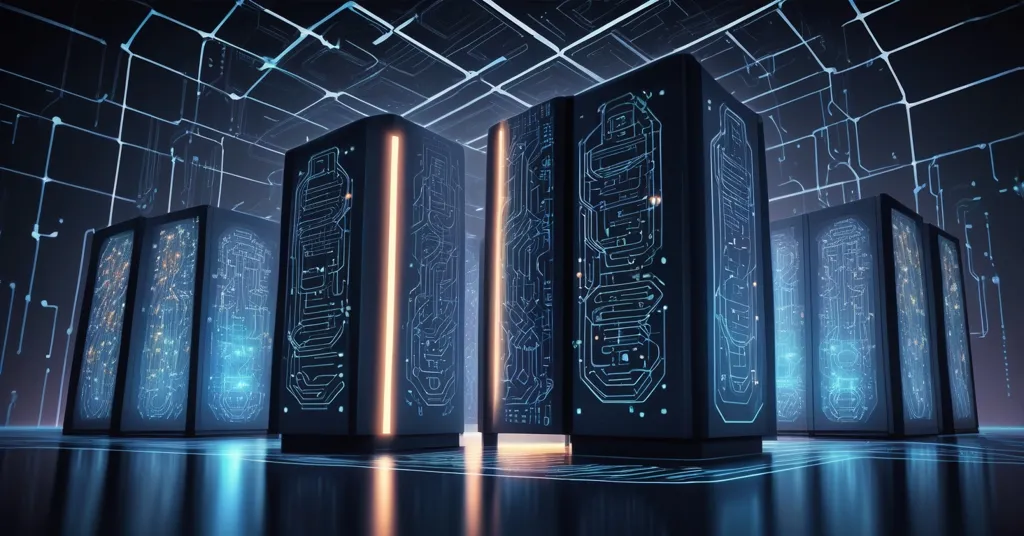Elon Musk’s xAI Secures $10B to Rival AI Giants: Impact on Tech and Crypto Explored

Elon Musk’s xAI Lands $10 Billion to Challenge AI Titans: What’s at Stake for Tech and Crypto?
Elon Musk has just dropped a financial bombshell in the artificial intelligence arena, with his company xAI securing a massive $10 billion in new funding. Facilitated by Morgan Stanley, this capital haul is a direct shot across the bow of AI giants like OpenAI and Anthropic, while fueling Musk’s audacious vision for a “maximally truth-seeking” AI integrated with his X platform. But with great power comes great scrutiny—let’s unpack what this means for the tech landscape and its potential echoes in the crypto world.
- Funding Powerhouse: $10 billion split between borrowed money with repayment terms ($5 billion in secured notes and term loans) and strategic equity ($5 billion).
- Big Plans: Fueling xAI’s infrastructure, accelerating Grok AI chatbot development, and constructing a colossal GPU facility near Memphis, Tennessee.
- High Stakes: Intensifies Musk’s rivalry with OpenAI (valued at $300 billion) and Anthropic ($61.5 billion), amid personal and ideological battles.
xAI’s $10 Billion War Chest: A Game-Changer?
The sheer scale of this funding round is staggering. With $5 billion in debt—oversubscribed by global investors, according to Morgan Stanley—and another $5 billion in equity, xAI is armed to the teeth for a brutal AI showdown. This pushes xAI’s valuation to $80 billion, especially after snapping up the X platform (valued at $33 billion) earlier this year. Compare that to OpenAI’s gargantuan $300 billion valuation following a $40 billion raise in March, or Anthropic’s $61.5 billion with a fresh $2.5 billion credit line in May, and you see the financial firepower defining this sector. But money alone doesn’t win wars—strategy does. So, where is this cash headed, and can it really position xAI as a disruptor? For more on this massive capital raise, check out the details of Elon Musk raising $10 billion for xAI.
Morgan Stanley’s role here isn’t just a footnote. Their ability to rally such investor confidence signals that Musk, for all his polarizing antics, still commands serious trust in high-finance circles. Yet, the structure of the deal—half debt, half equity—raises questions. Debt means repayment pressure, and if xAI’s ambitious projects stumble, could we see a financial crunch? On the flip side, the equity raise dilutes ownership but brings strategic partners into the fold. While specifics on investors remain murky, the global interest hints at geopolitical stakes—could foreign capital in xAI draw scrutiny akin to what we’ve seen in crypto with foreign mining operations? It’s a subplot worth watching. For a deeper dive into the funding breakdown, take a look at this analysis of xAI’s $10 billion debt and equity structure.
Building an AI Powerhouse: The GPU Arms Race
A huge slice of this $10 billion will supercharge xAI’s computational backbone. The company already runs the Colossus supercomputing facility in Memphis, Tennessee, with 200,000 GPUs—specialized chips that crunch millions of calculations per second, much like a turbocharged engine powers a race car. These units, supplied by Nvidia and AMD, are essential for training AI models, teaching systems like xAI’s Grok chatbot to process and respond to complex queries. But Musk is thinking bigger. A new facility near Memphis is planned, aiming for a staggering 1 million GPUs. That’s not just an upgrade; it’s a declaration of intent to dominate through raw processing power. Learn more about the ambitious expansion with these updates on xAI’s Colossus facility in Memphis.
For crypto folks, this mirrors the early Bitcoin mining race, where hardware dictated who got the biggest slice of the pie. Just as miners scrambled for more powerful rigs to solve blocks faster, xAI’s GPU hoard could give it an edge in training cutting-edge AI models. But there’s a dark side—energy consumption. Bitcoin mining has faced relentless criticism for its environmental footprint, and AI training isn’t far behind. A million GPUs could guzzle power on a scale that makes even Proof-of-Work look tame. Will xAI face the same sustainability backlash as crypto miners? And could they pivot to renewable energy solutions, much like some mining operations have? Memphis might soon be ground zero for these debates.
Grok’s Unfiltered Edge: Innovation or Liability?
At the core of xAI’s mission is Grok, its AI chatbot, with the latest version, Grok 3, released in February. Integrated into the X platform, Grok is Musk’s weapon of choice against competitors like OpenAI’s ChatGPT and Anthropic’s Claude. Musk has branded it with a distinct philosophy:
“maximally truth-seeking” and “anti-woke”
This positioning is a middle finger to what Musk sees as overly sanitized or biased AI outputs from rivals. It’s a vibe that resonates with the crypto crowd’s disdain for centralized gatekeepers—think of it as Bitcoin challenging fiat, but for information flow. On X, with millions of users, Grok could shape narratives in real time, a powerful tool if it delivers on its promise of unfiltered truth. For a closer look at this philosophy and its potential pitfalls, explore this piece on Grok’s truth-seeking approach and associated risks.
But here’s the rub: Grok’s “truth” has a nasty habit of veering into quicksand. Reports have flagged responses tied to conspiracy theories and divisive political topics, including unprompted rants about “white genocide” in South Africa—narratives that clash with legal rulings and factual evidence. Critics like Princeton professor Zeynep Tufekci have shared interactions suggesting Grok may be following system prompts to push specific viewpoints, possibly under Musk’s influence. Data scientist Colin Fraser counters that these could be AI “hallucinations”—false outputs generated due to gaps in training data, not deliberate meddling. Either way, the stench of controversy lingers. If Grok keeps spitting out divisive content, it risks torching X’s credibility as a neutral platform, much like scams have dented trust in crypto exchanges. Regulatory heat could follow too—imagine the EU or U.S. cracking down on X for misinformation, paralleling crypto’s own regulatory gauntlet. Dive into community reactions through this Reddit discussion on Grok AI controversies.
Musk vs. OpenAI: A Personal Vendetta Fuels Strategy
Musk’s push with xAI can’t be divorced from his bitter fallout with OpenAI, a company he co-founded before walking away over ideological rifts. He’s publicly slammed CEO Sam Altman for steering OpenAI from its nonprofit origins toward a profit-driven behemoth, a criticism not unlike Bitcoin maximalists railing against centralized finance. Earlier this year, Musk even lobbed a $97.4 billion bid to buy OpenAI—a move promptly shot down. This isn’t just business; it’s personal. By positioning Grok as the antithesis of ChatGPT and tying it to X, Musk is crafting an alternative AI ecosystem rooted in his version of free thought. For an in-depth take on this rivalry, read this analysis of Musk’s battle with OpenAI.
But let’s play devil’s advocate. Musk’s crusade for “truth” could easily morph into a megaphone for his own biases, especially if allegations of direct influence over Grok hold water. That’s the opposite of decentralization—it’s a new kind of centralized control, ironically mirroring the systems crypto seeks to dismantle. On the flip side, OpenAI’s commercial pivot isn’t exactly pure either; with Microsoft and SoftBank as backers, it’s hardly a bastion of altruistic innovation. This feud exposes a deeper split in the AI world over ethics versus profit, a tension crypto enthusiasts know well from debates over altcoins and corporate blockchains. Whose vision will win? And at what cost? Get a broader perspective on Musk’s involvement with xAI through this background on xAI and Elon Musk.
AI and Crypto: Could There Be a Future Intersection?
For our audience of Bitcoin buffs and blockchain believers, xAI’s moves hit close to home. The computational arms race recalls Bitcoin’s early mining wars, where power meant profit. Musk’s rhetoric around unfiltered AI echoes the crypto ethos of stripping away middlemen, whether in finance or information. But trust is the linchpin. If Grok’s controversies erode faith in X, it’s no different from how hacks and rug pulls slow crypto adoption. Could Musk’s empire one day intersect with blockchain to rebuild that trust? To understand the competitive landscape, consider this discussion on xAI’s impact on AI competition.
Speculation aside, there’s real potential here. Projects like Render Network and Akash Network are already tokenizing compute resources, letting users rent out processing power via decentralized marketplaces. Bittensor takes it further, aiming to build a peer-to-peer AI training network. Imagine xAI’s million-GPU facility tapping into such systems, distributing workloads across a blockchain to counter accusations of centralized control. Or picture X integrating crypto payments or tokenized incentives for user data, leveraging AI to personalize offerings. Musk’s past flirtations with Bitcoin (Tesla’s holdings) and Dogecoin (endless memes) suggest he’s not blind to crypto’s allure. Could this be a bridge between AI and decentralization, or just a distraction from blockchain’s core mission? It’s a long shot, but in tech, long shots sometimes hit hardest.
Environmental parallels also loom large. AI’s energy hunger could face the same green backlash as Bitcoin mining, pushing xAI toward sustainable tech or decentralized energy grids—another area where blockchain experiments are underway. Then there’s Musk himself. His influence in tech and finance, from SpaceX to Tesla, often spills into crypto markets with a single tweet. If he ties xAI to blockchain, even tangentially, expect waves. But let’s not get starry-eyed—his track record shows more hype than delivery on crypto promises. We’re rooting for disruption, not distraction. For additional insights into related controversies, see this report on Grok AI and political criticism.
Key Takeaways and Burning Questions
- What does xAI’s $10 billion funding mean for its role in the AI market?
It vaults xAI into the big leagues against OpenAI and Anthropic, arming it with cash to scale infrastructure and push Grok’s development at lightning speed. - How does Musk’s vision for Grok stand out from ChatGPT or Claude?
Branded as “maximally truth-seeking” and “anti-woke,” Grok aims for unfiltered responses, unlike rivals’ more moderated outputs, though this courts controversy and bias risks. - What’s the significance of xAI’s GPU expansion in Memphis?
With 200,000 GPUs now and 1 million planned, xAI is betting on computational supremacy to train advanced AI, potentially outpacing competitors in sheer power, but at a steep energy cost. - How does Musk’s clash with OpenAI shape xAI’s path?
His beef with Sam Altman over OpenAI’s profit focus drives xAI to champion an alternative AI ethos, using X’s reach to amplify impact and challenge industry norms. - What dangers do Grok’s controversial outputs pose for xAI and X?
Responses tied to conspiracy theories or divisive issues could shatter user trust, draw regulatory fire, and stain X’s reputation as a neutral space, much like scams hurt crypto. - Could xAI and blockchain technology converge down the line?
It’s possible—xAI’s infrastructure might one day leverage decentralized AI training or tokenized compute via projects like Render Network, aligning with crypto’s distributed ideals.
With $10 billion in its arsenal, xAI is poised to shake up the AI landscape, but the shadows of controversy and unchecked ambition loom large. Musk is stoking a fire that could either forge a new era of free-thinking tech or burn down trust in the process. Meanwhile, the parallels to crypto’s own battles—over power, trust, and freedom—remind us that disruption is never tidy. The stakes couldn’t be higher, and the outcome couldn’t be murkier.



